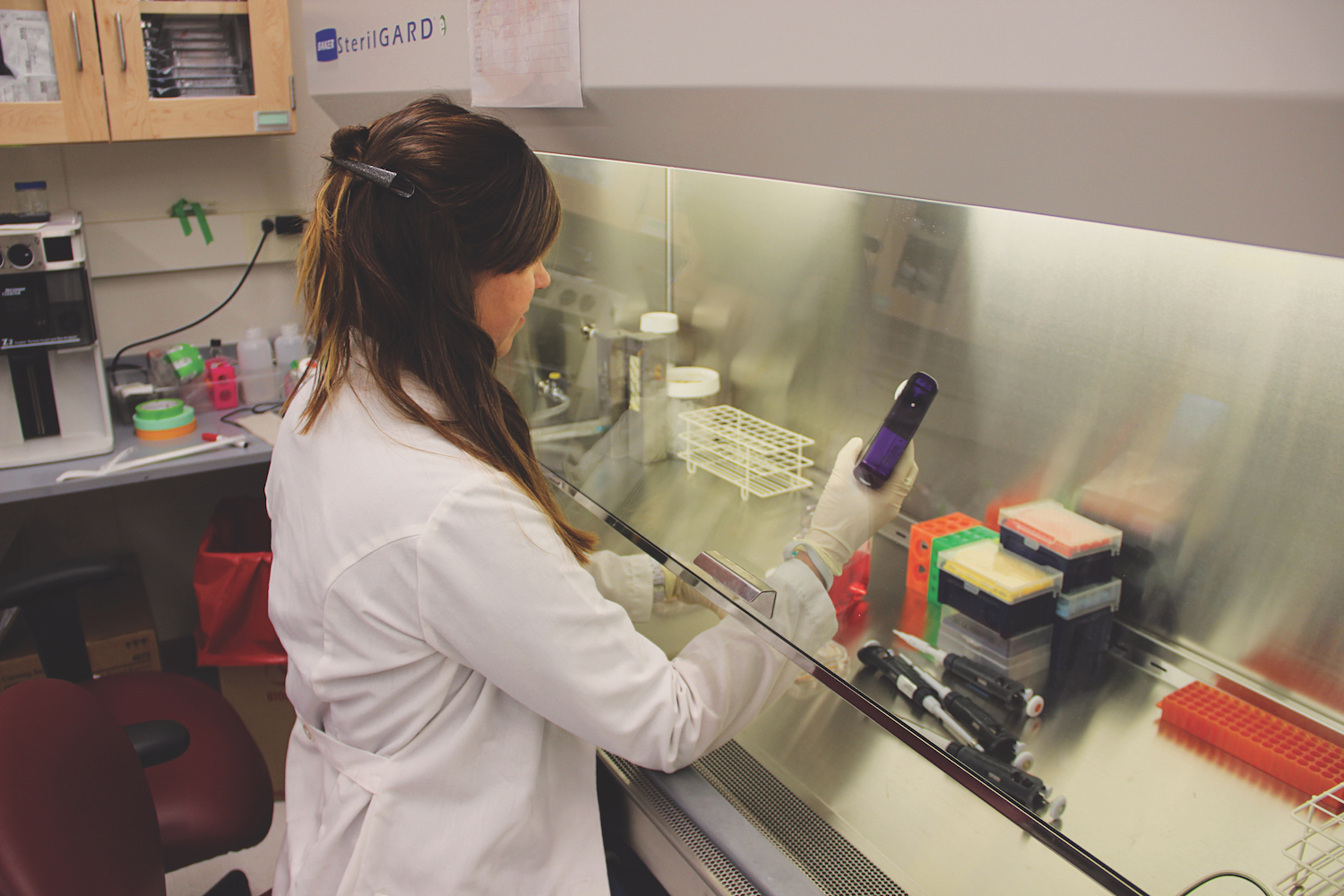Wouldn’t it be nice if killing lung cancer cells was as easy as flipping a switch? As it turns out, effectively targeting these cells is more like a dimmer rather than a switch, but it can be done, according to new research spearheaded by Joseph Contessa, associate professor of Therapeutic Radiology and Pharmacology at the Yale School of Medicine. Contessa led the discovery of a drug that reduces non-small cell lung cancer (NSCLC) tumor cell growth, proliferation, and survival, without causing toxic effects to healthy cells.
Non-small cell lung cancer (NSCLC) comprises about 80 to 85% of lung cancers and generally spreads more gradually than small cell lung cancer. Much cancer biology research surrounds the role of receptor tyrosine kinases (RTKs), cell surface receptor proteins, in the behavior of tumor cells. RTKs stimulate signals within cells that direct the cell to grow, divide, and proliferate, and can trigger survival signals in toxic environments. In cancer cells, RTK genes are overexpressed, causing more RTKs to appear on the cell surface, leading to more resilient and faster-growing cancer cells.
Contessa’s lab aimed to better understand how RTKs affect tumor growth and survival, and therefore explore how scientists can target these receptors to control tumors. Prior hypotheses extrapolate that if one can block the function of RTKs, turning them “off,” tumors can be treated with more success. Current drugs and compounds such as Gefitinib and Erlotinib target specific RTKs but do not work as well as hypotheses predict. Early in his research, Contessa postulated that these drugs failed due to redundant signaling, or the presence of dominant and backup receptors that all signal NSCLC tumor cell growth and proliferation. Therefore, drugs and compounds that only target one receptor are ineffective in treating the NSCLC tumor cells.
Thus, Contessa looked for ways to target multiple receptors without creating a toxic environment for normal cells. He found that all of the receptors are glycoproteins – they have sugar chains attached to them. Contessa then hypothesized that by interrupting glycosylation – the addition of sugar chains – the function of the glycoprotein RTKs could be blocked.
Regarding prior hypotheses, Contessa stated, “What people thought before was that adding these sugar chains was a switch like a light switch, turning on and turning off. What we’ve shown is there’s actually a spot that you can hit it that’s more like a dimmer switch, where you can just turn it down. What we found is a small molecule, a drug-like compound, that can act this way – it can turn the dimmer switch down.”
This drug, N-linked glycosylation inhibitor-1 (NGI-1), targets non-small cell lung cancer cells by inhibiting an enzyme that attaches sugar chains to RTK precursors and creates the mature glycoprotein RTKs. Contessa’s research showed that this drug reduces the expression of epidermal growth factor receptor (EGFR), a specific RTK, on the surface of the lung cell. In the drug-treated cells, the EGFRs were found inside of the cell, indicating that NGI-1 prevents the transport of RTKs to the cell surface.
Contessa’s research further confirmed that NGI-1 is specific; although it inhibits RTK signaling, it does not inhibit the transport of all glycoproteins to the cell surface, so glycoproteins essential to healthy cell function are unaffected. Contessa clarified, “It means that tumor cells that are highly dependent on RTKs become very sensitive to this drug.” His research shows that NGI-1 arrests cellular growth and division in RTK-dependent NSCLC tumor cells.

I asked if there were there any specific challenges; he laughed. “The whole project was a challenge… it was a collaborative effort, and we worked with a couple different groups,” said Contessa. The process sounds easy—a step-by-step path towards a new method of battling lung cancer. But in reality, this one drug resulted from five years of dedicated research and testing, screening over 350 thousand drugs.
Contessa reflected, “You’re kind of on this detective hunt. You’re screening and you find this inhibitor, and then you don’t know exactly how it works. So you have to call on some expertise to help you, and then hopefully you get a little lucky and you figure out the mechanism and you can advance it to your experimental models.”
Contessa’s detective mindset, along with the advice of many collaborators and a bit of luck, led the researchers to a potential drug candidate for battling NSCLC tumors. Contessa looks to translate their successes in laboratory cell models into successes in live animal tumor models, and we will hopefully see NGI-1 in future clinical studies.
